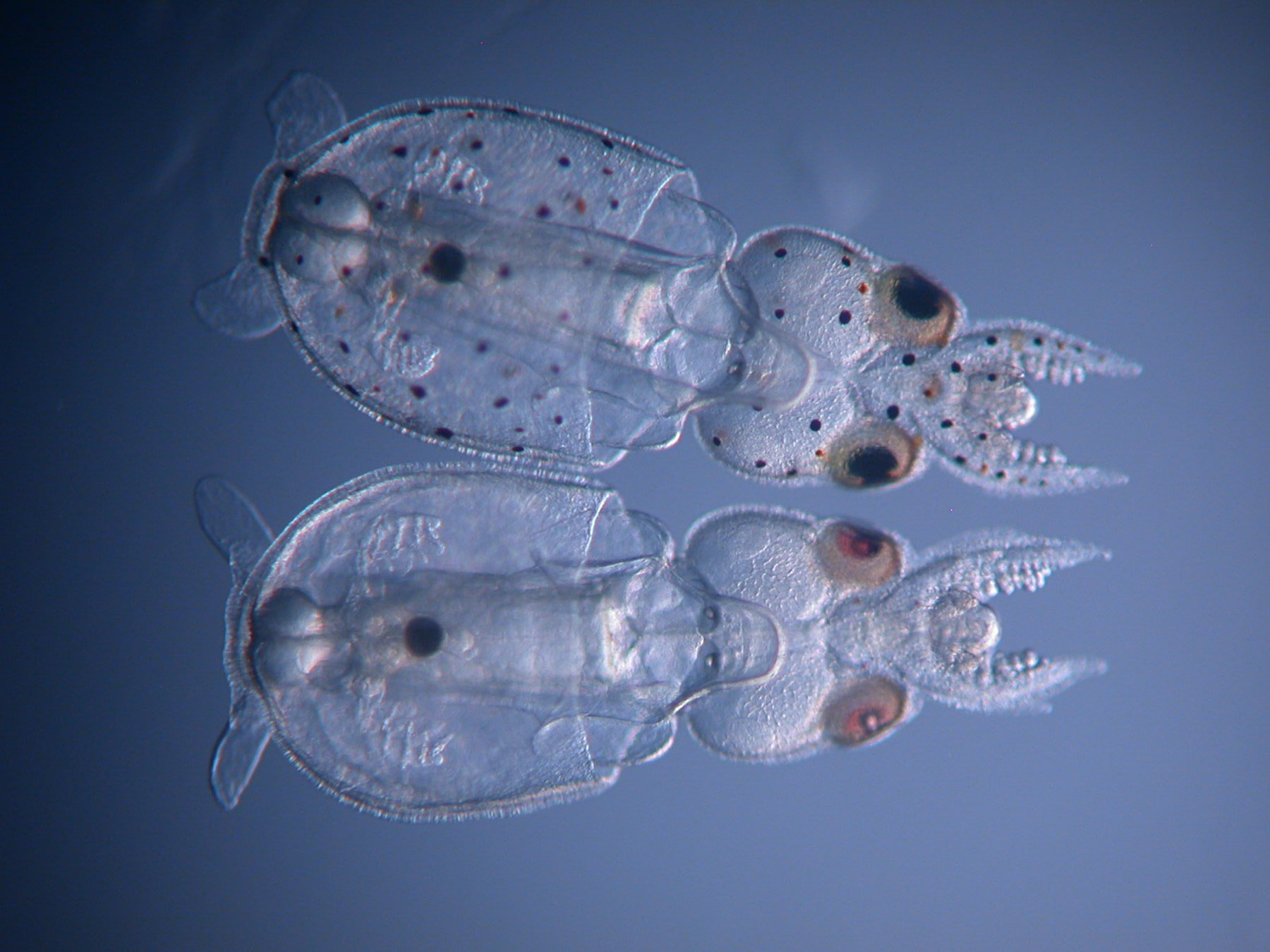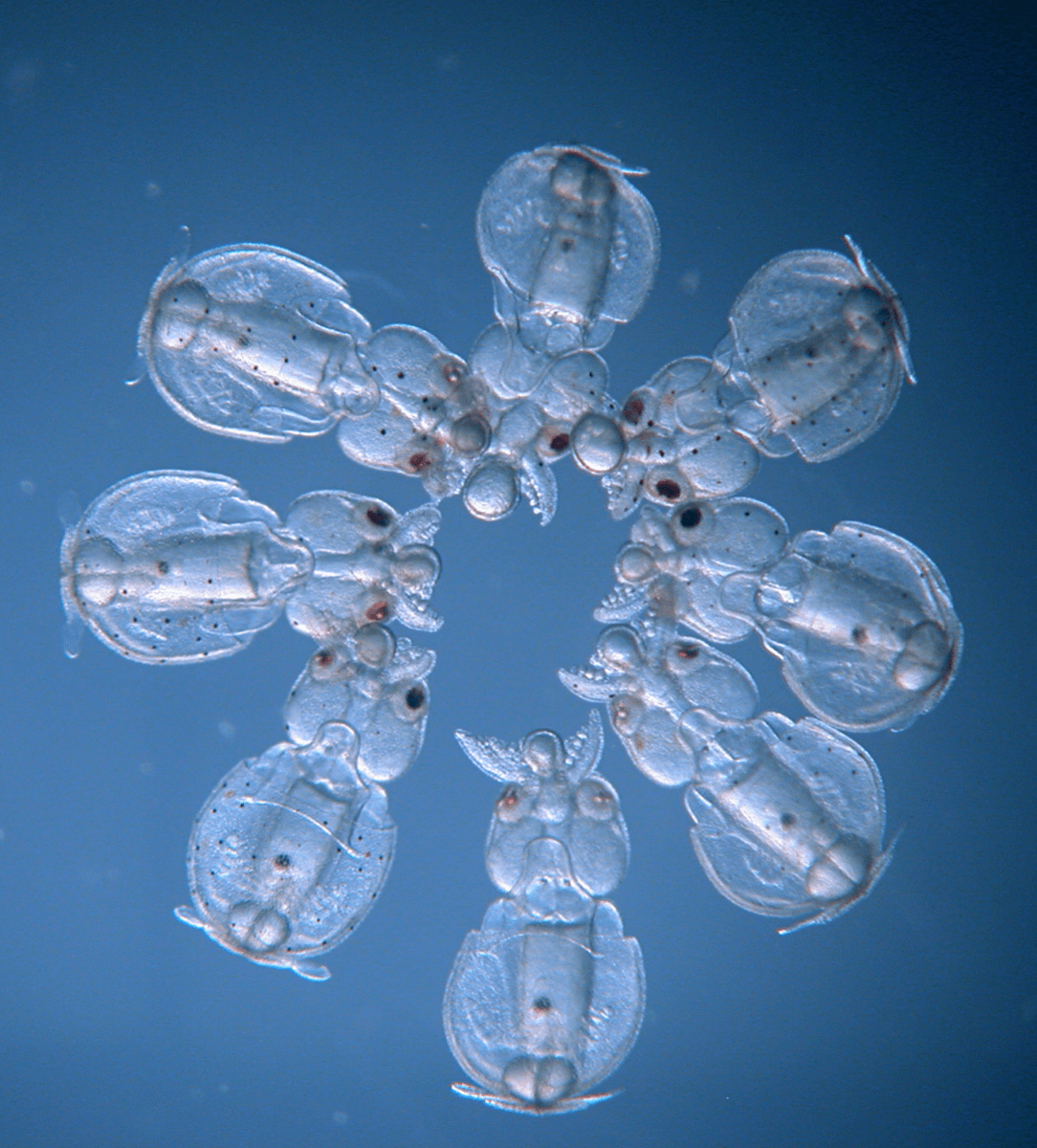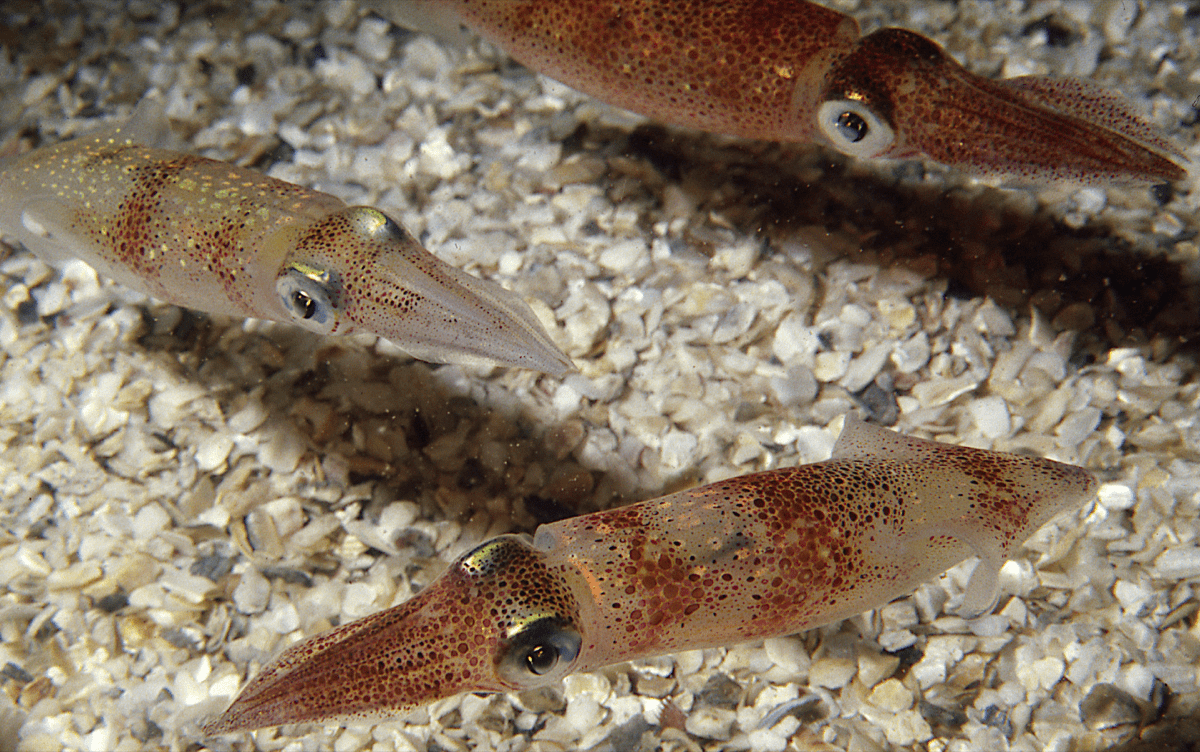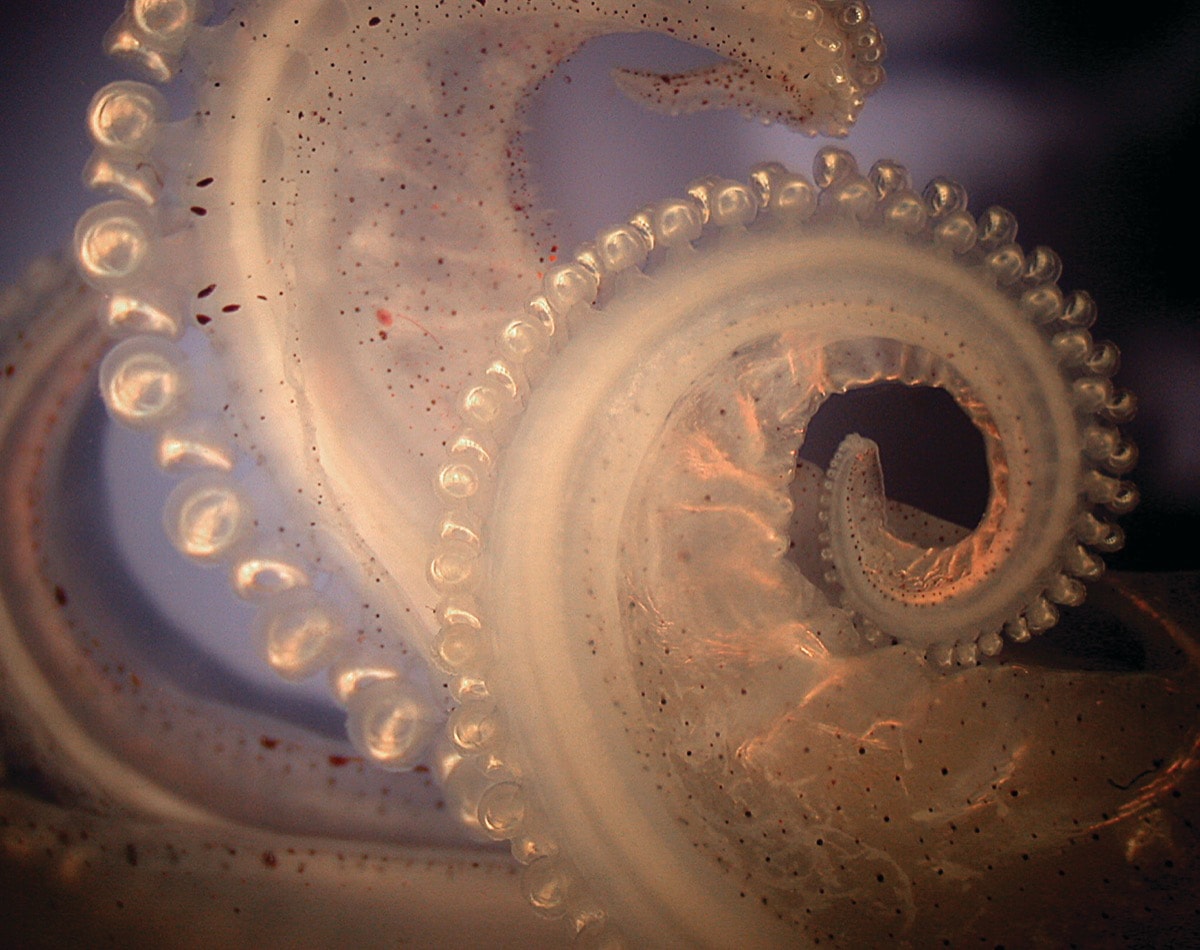Squid Gene-Editing Shows New Possibilities For Treating Genetic Diseases
16:36 minutes

Out on the southwest corner of Cape Cod lies the town of Woods Hole. The ocean here is flush with marine life, so it’s the perfect home for the Marine Biological Laboratory, an international center for research. Scientists here recently thrilled the genetics world by announcing they’ve successfully knocked out a gene in squid for the first time.
“I’m like a kid in a candy store with how much opportunity there is now,” says Karen Crawford, one of the researchers and a biology professor at St. Mary’s College of Maryland. Crawford explains this modification has huge implications for the study of genetics: Squids’ big brains mean this work could hold the key to breakthroughs in research for human genetic diseases, like Huntington’s disease and cystic fibrosis.
Joining Ira to talk about the news are Crawford and her co-lead on the research, Josh Rosenthal, a senior scientist at the Marine Biological Laboratory in Woods Hole, Massachusetts. See more images from the research below.



Invest in quality science journalism by making a donation to Science Friday.
Josh Rosenthal is a senior scientist at the Marine Biological Laboratory, University of Chicago, in Woods Hole, Massachusetts.
Karen Crawford is a professor of Biology at St. Mary’s College of Maryland in St. Mary’s City, Maryland.
IRA FLATOW: This is Science Friday. I’m Ira Flatow. Out east on the southwest corner of Cape Cod is the town of Woods Hole.
The water in this area is flush with marine life. So it’s the perfect hope for the Marine Biological Laboratory and International Center for Research. And it’s here that big news in genetics world has come out.
For the first time, scientists have successfully knocked out a gene in squid. This has huge implications for the study of genetics. Here to talk to us about the research are two of the scientists involved, Josh Rosenthal, Senior Scientist at the Marine Biological Lab in Woods Hole, and Karen Crawford, Professor of Biology at St. Mary’s College of Maryland. She is a visiting research fellow at the laboratory. Welcome, both of you, to Science Friday.
KAREN CRAWFORD: Thank you. It’s great to be here.
JOSH ROSENTHAL: Thank you very much for having us.
IRA FLATOW: Josh, I want to start with the why. Why was there this quest to knock out a gene in a squid?
JOSH ROSENTHAL: I think this goes back to really a big initiative we have at the NBL, which recognizes that life started in the ocean. And more biodiversity exists in the ocean than anywhere else. But we really don’t have the tools to study it. There are a lot of creatures that have all sorts of interesting biological programs that we’d like to get at.
And really in order to get at those things these days, you need what we call genetic tractability. That’s the ability to manipulate genes and see the outcomes. So one of the groups of organisms that we’re very interested in are cephalopods because of their biological novelties. We want to use genetically tractable organisms to answer some of the fundamental problem and questions about marine organisms.
IRA FLATOW: And, Karen, what gene did you target here? I understand it was a pigmentation gene. Why did you choose that?
KAREN CRAWFORD: We chose the tryptophan 2,3-dioxygenase gene, which I’m just going to call TDO, because it’s the very first enzyme step in making a set of pigments called ommochromes. So just think of pigment cells.
And we chose that enzyme because we knocked out just that enzyme. Then the pigments could not form. And the embryo would be a direct read out that we had been successful.
So we could actually visualize, control embryos with their beautiful chromatophores coming off their pigment cells. And we could visualize our injected embryos and actually see them appear as partial or maybe even complete albino embryos, lacking pigment. And so it’s a way for us to get a read out directly from one embryo that the project is working.
IRA FLATOW: Yeah, you can certainly tell in several pods because they’re so talented in changing the pigmentation of the skin themselves. You can certainly tell when it’s been changed. And I’m looking at the photos of this squid we’re talking about. It looks like you made them clear as glass. Is that right, Karen?
KAREN CRAWFORD: The pigments are missing. But the clear as glass quality is actually something that’s unique to that embryo, which also is a great feature for studying it. As it’s developing from the fertilized egg until the little squidlette that you’re looking at, the embryo is completely clear. So you can actually watch everything happen as it’s happening in the living embryo.
IRA FLATOW: How difficult was it in knocking out this gene?
KAREN CRAWFORD: Well, the most important part about knocking out the gene was actually getting into the embryo without damaging it. So when I think about the two elements that came into play, one is to be able to create fertilized embryos and culture them. And we’ve done that.
The second advancement was more recent. And that was the injections. So the embryo surrounded and protected by a clear, tough, rubbery layer called the chorion. It needs this layer to develop normally.
If you remove it, the embryo doesn’t develop. And if you make a large hole in it, the embryo extrudes out like toothpaste. So I want you to think of a pair of very fine tweezers, a little thicker at the end than an eyelash. Then I want you to bend those very tips of the tweezers about 30 degrees so that they crisscross. And that creates a very tiny scissor that can cut holes in the rubbery layer of the embryo, smaller than the diameter of a single red blood cell. That’s pretty tiny.
But the holes are big enough to allow my injection needle through, yet small enough to hold the embryo inside and even heal up. And so I set the stage. I do my injections. And the embryo does the work. And my job is to just watch the show.
IRA FLATOW: Well, but how much practice does this take? I mean–
KAREN CRAWFORD: It takes a lot. And for years, I had created holes in chorions in different ways, making tiny, tiny little round holes with my forceps. And a colleague of mine told me that they were beautiful, but impossible for anybody else to make. So we’ve fashioned these scissors.
And now I’m in the process of teaching others how to use them. And they’re being successful. So it’s not as impossible as it sounds. But it does take some sharing and some training on it.
IRA FLATOW: Josh, you mentioned this a bit earlier in an answer to my question. Because when we think of genetic research, we usually think of lab rats and fruit flies. Does this breakthrough mean that squid could be added to that list of lab animals that you test things on?
JOSH ROSENTHAL: Well, we’re moving in the right direction. Probably starting in about the ’80s, 90% of biology was focused on those animals you’re talking about, things like the fruit fly and lab mouse, et cetera. And there’s been unbelievable progress in those systems.
The things you can do really wow me every day. However, we’re starting to move towards closing that gap. And really, I think we’ve got to credit this revolution with CRISPR-Cas9 genome editing with that because it’s species agnostic.
If you can culture a species in the lab and have access to the embryos, you have a good chance of being able to do gene knockouts. And we took advantage of that. So we’re at the first steps. We can do a gene knockout now in this species. But there’s a long way to go for what we really want to accomplish.
IRA FLATOW: Well, is there something special with this gene editing technique in this specific gene that we’re talking about that could be beneficial for other animals or for humans?
JOSH ROSENTHAL: This gene that we’re talking about right now is really just a proof of principle for us. But cephalopods– some of their novelties, I think, hold tremendous promise for a lot of things that can really change the human condition. I am happy to talk about some of their novelties. But things that you’re not going to find in a fruit fly or a lab mouse, there’s just all this biological diversity. And cephalopods really embody that.
IRA FLATOW: We’re happy to talk about because we have a whole cephalopods week. We love cephalopods. And we understand how diverse the talents that they have.
JOSH ROSENTHAL: Yeah, I realize that I’m preaching to the converted few. Yes, so the cool thing about cephalopods is that they have developed over a completely different evolutionary trajectory. So in life, you have two groups that have achieved really incredible behavioral sophistication.
And those are animals along the vertebrate lineage and cephalopods. So if you study things along the vertebrate lineage, let’s say you’re interested in behavioral sophistication in a fish or a bird or a monkey or any mammal, you’re going to be studying a lot of similar innovations because they’ve been derived along the similar pathway. However, cephalopods have done this independently.
I’ll give you a couple examples. They have these enormous brains. The brain of an adult octopus, for instance, is about six times bigger than that of a mouse. And for an invertebrate, this is tremendous.
And so there are some big differences. It’s organized in a completely different manner. For instance, in vertebrate brains, in our brains, it’s very centralized. So if you think of something, or you want to control your hand or you smell something, that’s all being processed in your brain up in your head.
Over half of all cephalopod neurons are peripheral. They’re outside of that central brain. And that means they’ve figured out ways to do things differently, to control their lives, to control their movements, and their sensory in a fundamentally different way. And we don’t know how it works. So being able to access the genes now, basically we can have a way in to start studying these processes.
IRA FLATOW: Karen, are you as excited about cephalopods as Josh is?
KAREN CRAWFORD: Oh my goodness, I’m very excited about cephalopods. I first was drawn to them because of their beauty, but also many important qualities. The embryo that I work on, they’re actually very tiny. They’re 1.6 by 1 millimeter in size, smaller than the head of a pin.
Cephalopods are related to mollusks, snails, clams, and oysters. And even though their eggs are tiny, some species have larger eggs. They contain a lot of yolk and divide differently than all the other members of the Spiralian group, which they belong to.
Interestingly about squid and octopus and cuttlefish is the first cell division, unlike in us, but it divides the squid embryo into a right and left side. So we can take advantage of this quality and inject one cell at the two cell stage. We can inhibit or knock out a gene. We can add a gene or knock in a gene and do this on only one side of the embryo.
As a result as it develops, we can see, in comparison to the uninjected side, what the gene does. We can actually begin to answer a question in one embryo, what does this gene do? We’re at a place now where it’s not, are there interesting questions to ask? It’s more what interesting questions can we ask first because there’s so many?
IRA FLATOW: Would it be fair to say then, Karen, that you have created, by knocking out a gene, you’ve created a new species of squid?
KAREN CRAWFORD: No, it’s not a new species. And this particular organism, the Atlantic long fin squid, it doesn’t culture in aquaculture in the laboratory. So this lifecycle has not been closed. So we are not getting animals to breed in the laboratory and creating another generation.
What we have done, though, is we’ve modified a squid to allow us to know that we can manipulate its DNA and ask important questions and analyze that result. And this opens the field to questions about neurogenesis, developmental biology, basic cell functions, possibly even relating to nerve degenerative diseases, Alzheimer’s and Parkinson’s. And there are many, many scientists studying the neural pathways in cephalopods that will be excited by this method and want to then bring their own questions to the early embryo to get an answer and bring them closer to what we understand.
IRA FLATOW: Are there any questions, Josh, about how ethical it is to study the squid and cephalopods?
JOSH ROSENTHAL: Yeah, I mean, absolutely. This is as– most people probably don’t know that cephalopod use is regulated in Europe and Canada presently. This was a recent change. But it isn’t in the United States.
However, at the NBL, this is something we take really seriously. And actually, we’ve come up with a comprehensive set of guidelines for the ethical and humane use of cephalopods pods in research. And so anyone who comes into the NBL has to follow these guidelines. And they’re constantly involved.
The important point thing here is that we want to make sure that these guidelines are based on science. And the issue is there hasn’t been that much science done. So for instance, if you’re going to make– if you want to use an anesthetic, you have to make sure it actually works in a cephalopod. So we’re actively working in these areas as well.
IRA FLATOW: I’m Ira Flatow. This is Science Friday from WNYC studios. In case you’re just joining us, we’re talking with Dr. Josh Rosenthal and Dr. Karen Crawford, both working at the Marine Biological Laboratory in Woods Hole.
I’m talking about gene modification of cephalopods. And in this case, a squid. So what is so special about cephalopods that you have these special limitations on them?
JOSH ROSENTHAL: Their behavioral sophistication. In the US, we have this division between invertebrates and vertebrates. That if you work on an invertebrate like a fruit fly, you aren’t regulated. If you work on a vertebrate like a fish, you are regulated.
And generally, that is along a very vertebrate-centric axis, thinking that the vertebrates are the behaviorally sophisticated groups, and invertebrates aren’t. But cephalopods are this one example of behavioral sophistication in invertebrates. And that’s why we’re taking it so seriously.
IRA FLATOW: Speaking of sophistication, I understand that you were part of a team that made another squid discovery recently, that they can edit their own RNA an unexpected way. What is that all about?
JOSH ROSENTHAL: Yeah, I think this is one of those really cool things about cephalopods. Some of their biological novelties you can just see, like their ability to camouflage, which is incredible. Some of them are more hidden.
And so what we stumbled across is that they’re able to edit their genetic information on the fly. And I think a good analogy is your genome contains all the genes that encode all the information you need during your lifetime. And at any one moment, you only need a little bit of that information, a subset.
I liken it to your genome is like a library. And at any one moment, you might only want to take out a couple books. However, let’s say you take out a book today because you want to bake a loaf of bread. And you go and you start making that bread and the instructions say, OK, let it rise for four hours.
But your kitchen is very hot. And you see after two hours, it’s already risen enough. Wouldn’t you like to be able to modify those instructions?
Well, squid have figured out a way to do this on a massive level where they recode or change genetic information on the fly as it goes through these RNA molecules. And this has, I think, tremendous applications. Very interesting from a biological perspective. And it has tremendous applications in biomedical realms as well because if you can tap this ability to edit genetic information, it’s one of the most powerful ways to intervene for therapeutics.
IRA FLATOW: Karen, is that where you think this is very important also, using it eventually in genetic therapeutics for people?
KAREN CRAWFORD: The first steps for me, I’m a developmental biologist, which means I study how you go from being an egg to being you with all the parts in the right place. And so for me, there are so many fundamental questions and classic questions that initially some with cephalopods were started at the NBL with other scientists that have taken us to a place. So there’s so many basic fundamental biology questions, neuroscience questions, that I want to answer. But I cannot believe that some of the answers that we get from those questions will lead to a better understanding of our own nervous system, cell function, cell-cell communication, and in the end, therapeutics, because cephalopods do become senescent.
And they have changes. And we can study that in relation to how our own nervous system changes. So I am going to start more on the classic embryology side of things. But I believe very quickly we’ll, through collaboration, have applications that will help with human health.
IRA FLATOW: Well, as I said, we love cephalopods on Science Friday and devote a lot of time to it. And I’m glad we could add some more cool knowledge about what you guys know about cephalopods. I want to thank both of you for taking time with us today.
Josh Rosenthal, Senior Scientist at the Marine Biological Lab in Woods Hole, Karen Crawford Professor of Biology at St. Mary’s College of Maryland and a visiting research fellow at the Woods Hole Laboratory in Massachusetts. Thank you both for taking time to be with us today. Good luck in your work.
KAREN CRAWFORD: Thank you so much. It’s been a pleasure.
JOSH ROSENTHAL: Thank you very much for having us.
Copyright © 2020 Science Friday Initiative. All rights reserved. Science Friday transcripts are produced on a tight deadline by 3Play Media. Fidelity to the original aired/published audio or video file might vary, and text might be updated or amended in the future. For the authoritative record of Science Friday’s programming, please visit the original aired/published recording. For terms of use and more information, visit our policies pages at http://www.sciencefriday.com/about/policies/
Kathleen Davis is a producer and fill-in host at Science Friday, which means she spends her weeks researching, writing, editing, and sometimes talking into a microphone. She’s always eager to talk about freshwater lakes and Coney Island diners.
Ira Flatow is the founder and host of Science Friday. His green thumb has revived many an office plant at death’s door.